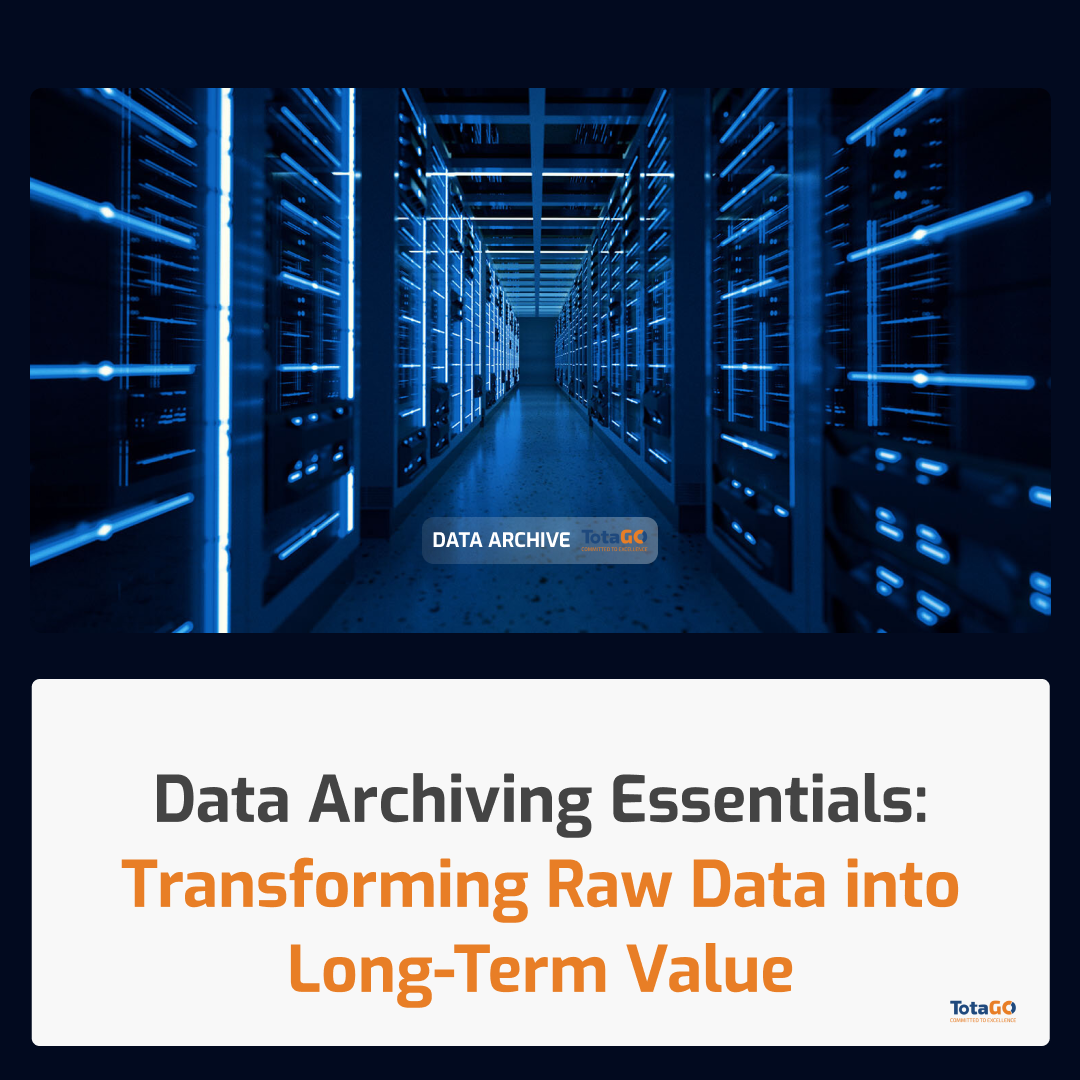The World is digital, and data has become one of the most valuable assets for businesses across industries. From customer information to transaction records, businesses generate and accumulate vast amounts of data on a daily basis. However, managing this data effectively presents a significant challenge. As data volumes continue to grow exponentially, businesses must navigate complex issues such as data retention, compliance with regulations, and ensuring data integrity and accessibility over time. This is where data archiving comes into play.
What Is Data Archiving and Why Is It Important?
Data archiving involves the process of systematically moving data from primary storage to a separate storage medium for long-term retention. It is important for several reasons:
- Compliance: Helps organizations meet legal and regulatory requirements for data retention.
- Cost Efficiency: Reduces the storage costs associated with keeping large volumes of data on primary storage systems.
- Data Preservation: Ensures that valuable historical data is preserved and accessible for future analysis and reference.
- Performance Optimization: Frees up primary storage resources, leading to improved system performance and efficiency.
How Does Data Archiving Differ from Backup?
While data archiving and backup both involve the storage of data for future use, they serve different purposes:
- Data Archiving: Focuses on retaining data that is no longer actively used but may still hold long-term value. However, Archived data is typically stored in a read-only format and can be accessed for reference or compliance purposes.
- Backup: Involves creating copies of data to protect against loss in the event of system failures, disasters, or accidental deletion. Also, backup data is often stored on secondary storage for short-term recovery purposes. Also, With data backups you can take action! Read more.
What Methods and Technologies Are Used for Archiving?
Additionally, there are several methods and technologies are used for data archiving:
- Traditional Archiving Systems: Utilize tape libraries, optical discs, or dedicated disk arrays for long-term data storage.
- Cloud Archiving: Store archived data in the cloud, leveraging scalable and cost-effective storage solutions offered by cloud providers.
- Object Storage: Use object storage systems that provide efficient and scalable storage for unstructured data, suitable for archival purposes.
- Content Management Systems (CMS): Employ CMS platforms with built-in archiving capabilities for managing and retaining documents, emails, and other content.
What Legal and Compliance Considerations Exist?
Also, it is important to note that legal and compliance considerations play a crucial role in data archiving:
- Regulatory Requirements: Ensure compliance with industry-specific regulations governing data retention and privacy, such as GDPR, HIPAA, or SOX.
- Data Security: Implement measures to protect archived data against unauthorized access, tampering, or data breaches.
- Retention Policies: Define clear retention policies specifying how long different types of data should be retained in the archive and when it can be safely disposed of.
- Legal Holds: Adhere to legal hold requirements to preserve archived data that may be subject to litigation or investigations.
How To Retrieve Archived Data?
Retrieving archived data involves the following steps:
- Identification: Identify the specific data or records needed for retrieval.
- Access Control: Ensure proper authorization and access controls are in place to retrieve archived data securely.
- Search and Retrieval: Use search tools or metadata to locate the desired archived data and retrieve it from the archive storage.
- Restoration: Restore the archived data to the appropriate location or system for further analysis or use.
How To Implement a Data Archiving Strategy?
Implementing a data archiving strategy involves the following steps:
- Assessment: Assess the organization’s data storage needs, compliance requirements, and data lifecycle.
- Policy Development: Develop data archiving policies defining what data to archive, how long to retain it, and where to store it.
- Infrastructure Planning: Choose appropriate archiving technologies and storage solutions based on scalability, performance, and cost considerations.
- Implementation: Deploy archiving systems, configure policies, and establish processes for data ingestion, retention, and retrieval.
- Monitoring and Maintenance: Regularly monitor archiving processes, ensure compliance with policies, and perform routine maintenance to optimize performance and reliability.
How To Monitor Archiving Performance?
Additionally, monitoring archiving performance helps ensure the effectiveness and efficiency of the archiving process:
- Performance Metrics: Track key performance indicators such as archiving throughput and storage utilization. Also, track data retrieval times.
- Alerting and Reporting: Set up alerts for abnormal conditions or performance issues and generate regular reports to assess archiving effectiveness.
- Capacity Planning: Monitor storage usage trends and plan for future capacity requirements to avoid storage bottlenecks or resource constraints.
- Quality Assurance: Conduct periodic audits and checks to ensure data integrity, compliance with retention policies, and adherence to best practices.
Conclusion
Data archiving is a critical aspect of data management, enabling organizations to retain and access historical data for compliance, analysis, and reference purposes. By understanding the importance of data archiving, the differences from backups, methods and technologies used, legal and compliance considerations, retrieval processes, implementation strategies, and performance monitoring, organizations can develop robust archiving practices that ensure data integrity, compliance, and accessibility over the long term.



